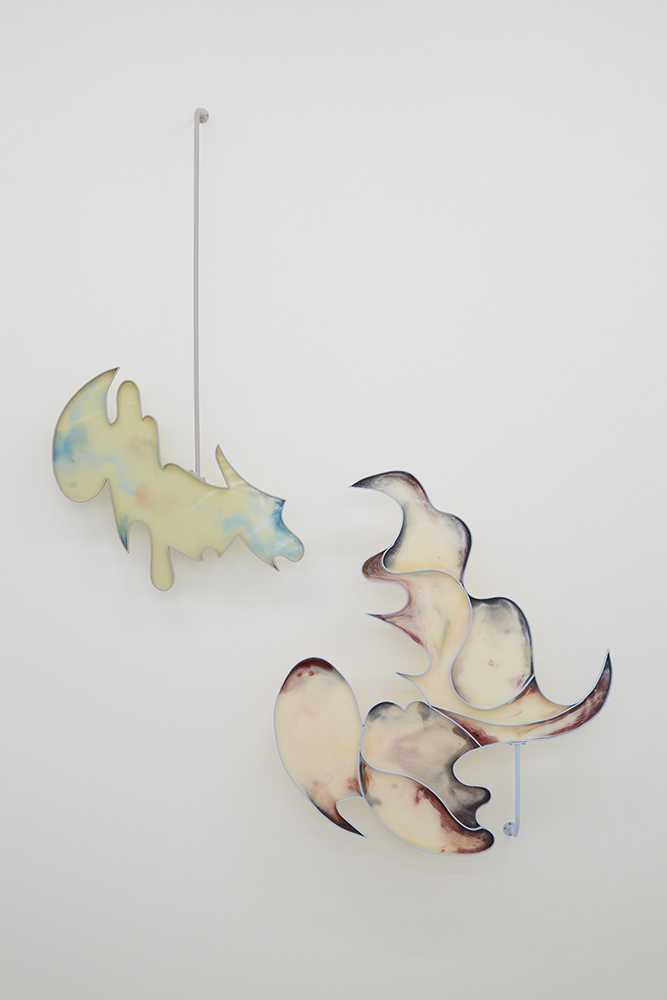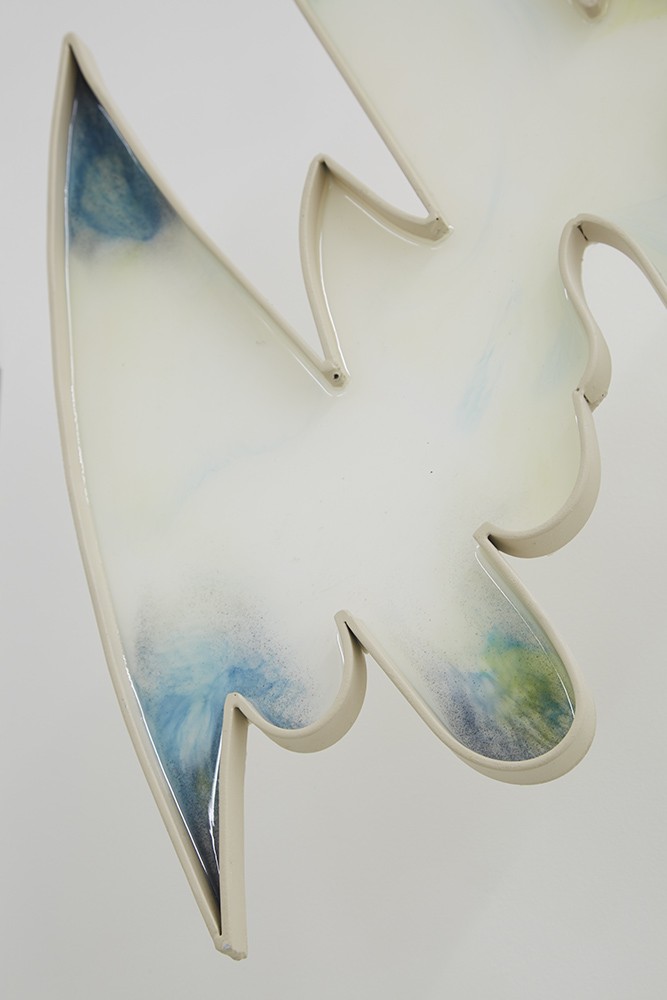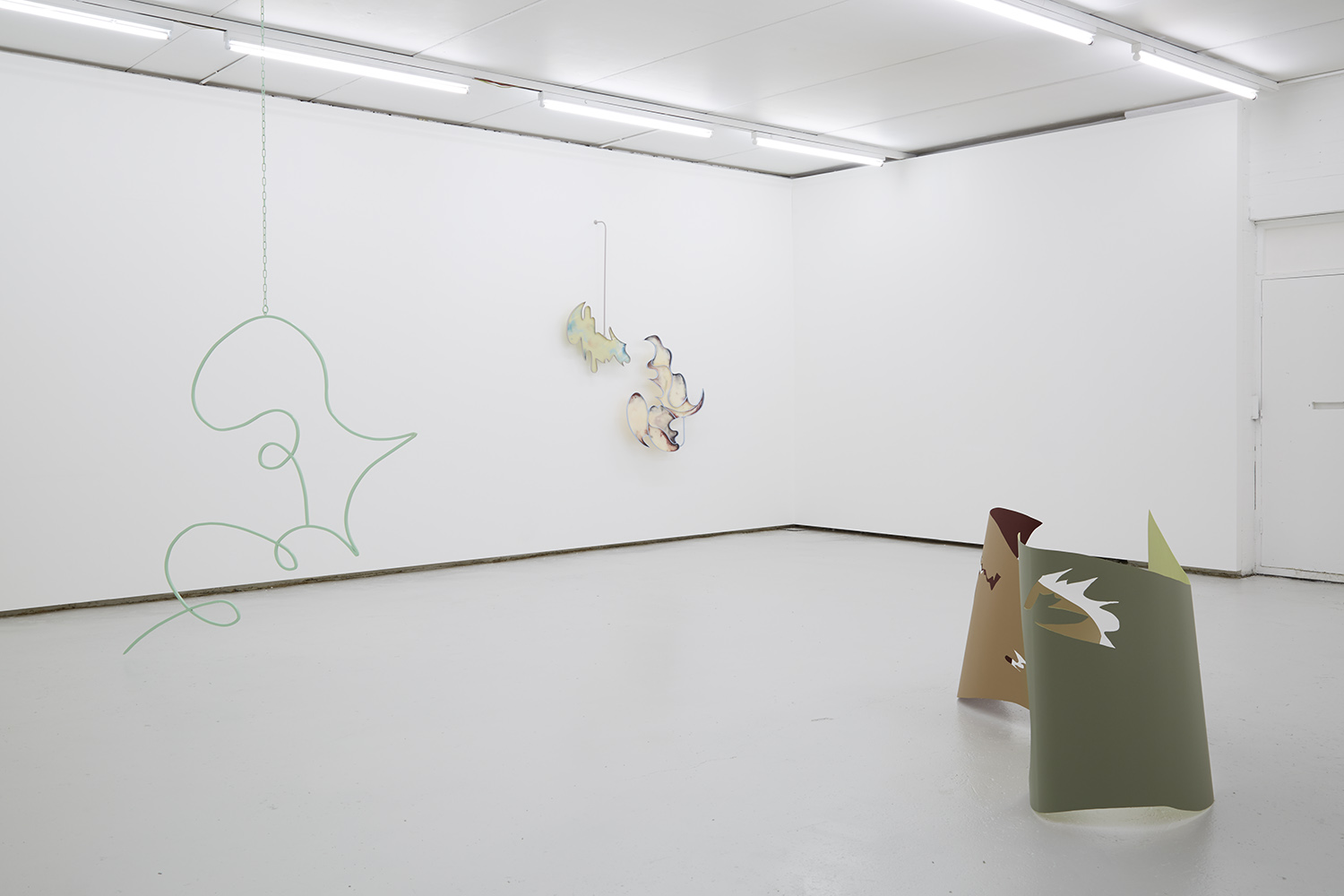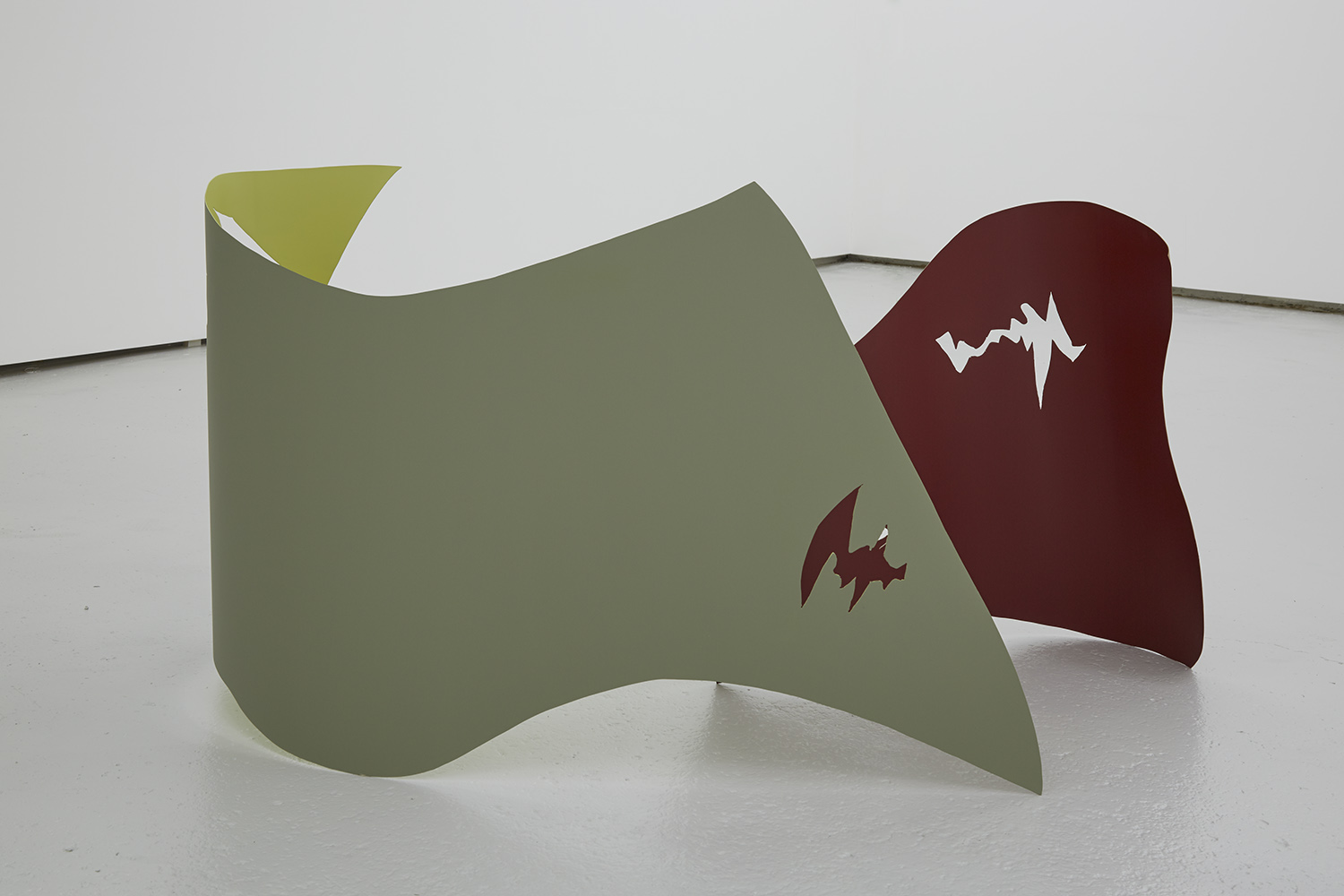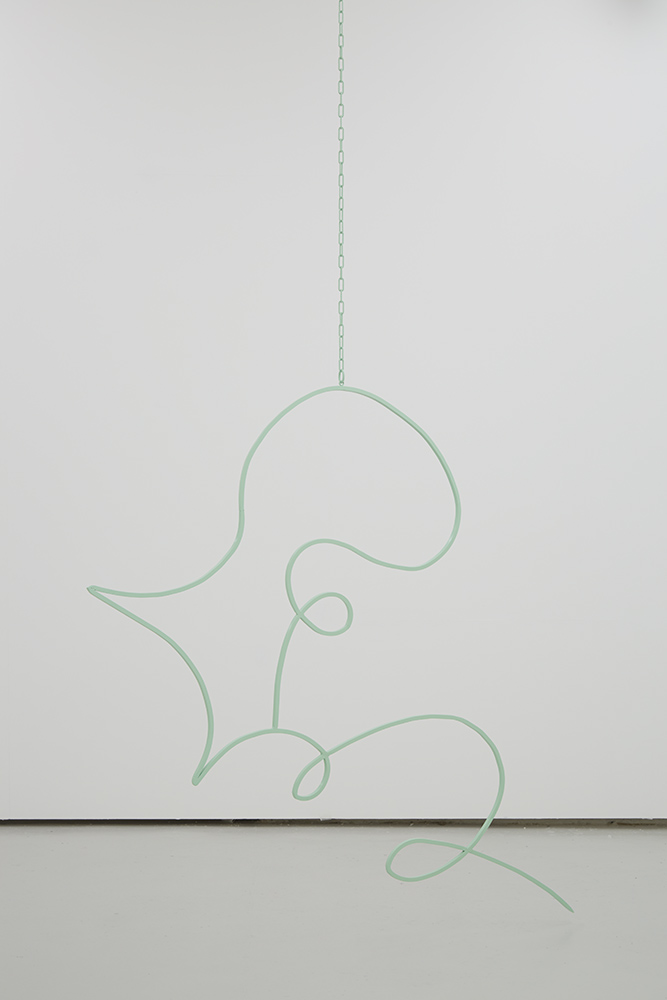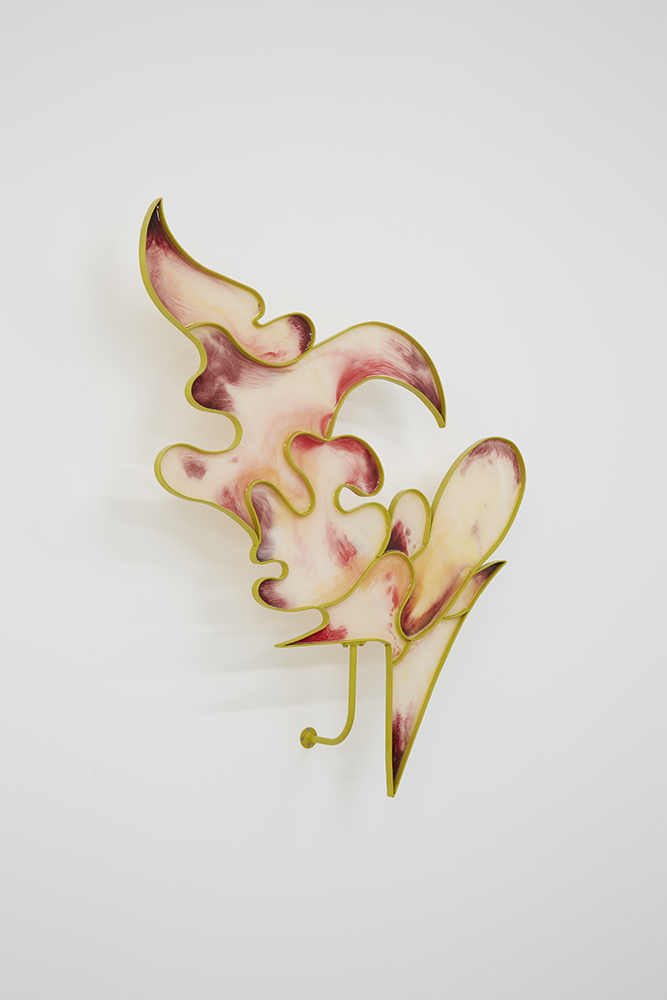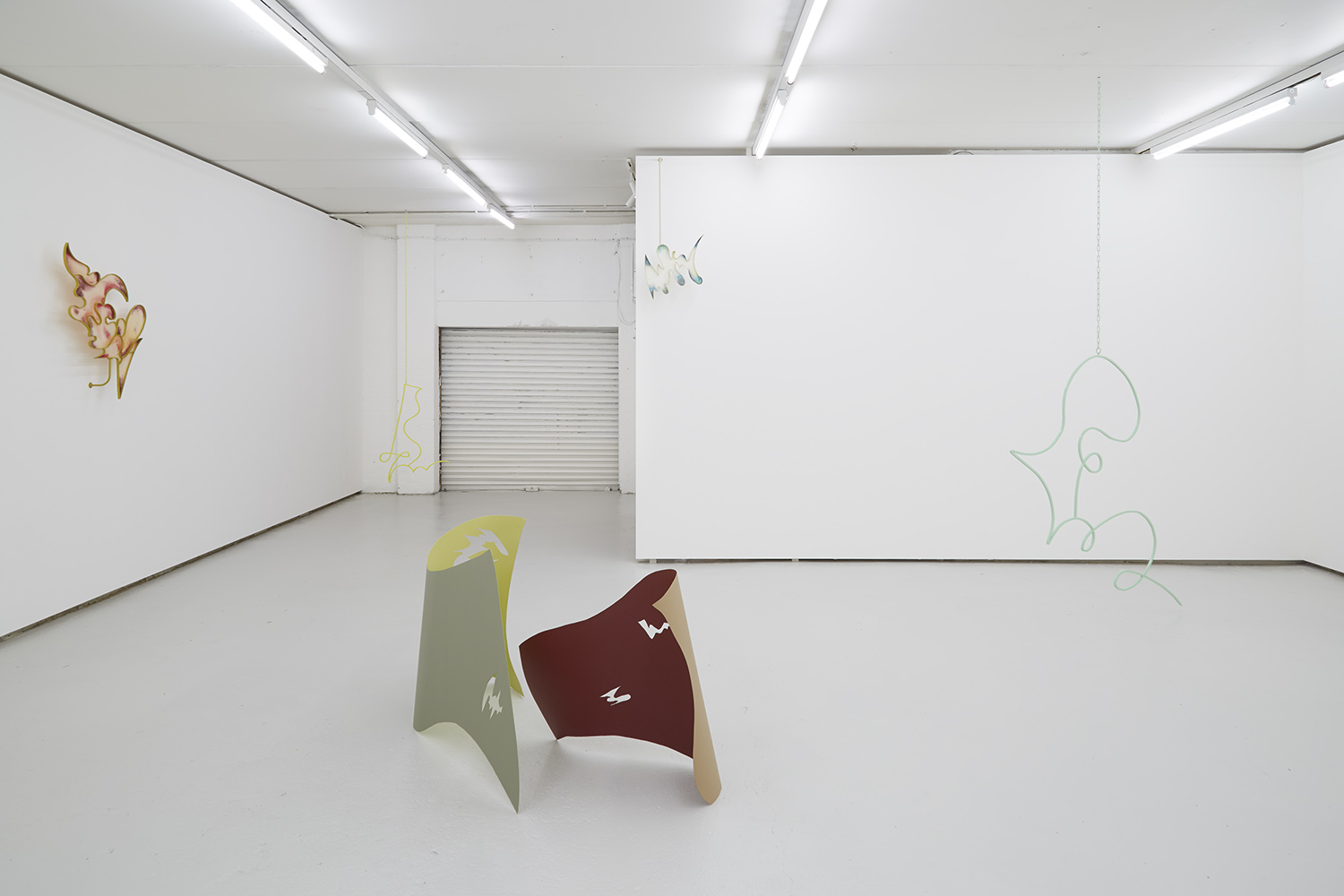Dutch artist Hanae Wilke graduated from the RCA in 2015, and is currently showing at London’s Kinman Gallery–her first solo exhibition. ‘The works find their starting point within the physical gesture of language,’ she tells Molly Taylor ‘and I’ve been playing with what could be considered wordless emblems.’
This is your debut solo exhibition–congratulations! How did the show come to be?
I met Henry Kinman through my degree show at the Royal College of Art over the summer, after which he asked me to do a solo show at his gallery, for which I made a new body of work. It was incredibly exciting to be offered a space in which to exhibit in a way I’d never really been able to do before—to command an entire space, to allow the works to breathe.
How does language figure in your work?
Language, or rather the discrepancy between what is said and what is understood is something that interests me. The works find their starting point within the physical gesture of language, and I’ve been playing with what could be considered wordless emblems, surfaces of signage, where the eye traces over curved steel, attempting to find words within the word-like gestures.
So there’s an interest in the material manifestation of the word: speech being transformed to script that is translated, through sculpture, into a bodily experience, but that distances itself from its original symbolic meaning. It’s the desire to transfigure word into body, to reveal the word’s status as a vessel, to make physical the incessant chatterbox.
The notion that the body enters poetry through beat and rhythm has also been influential: to find rhythm through form and line, as well as through the choreography of the works within the exhibition space.
Can you tell us about your use of chance and error?
I look for the amorphous, for ambiguity, and forms that teeter on the brink of the known, and how this formlessness relates to the nature of desire. I like to think of my work as residing within the subjunctive, a linguistic term used to describe states of unreality: an intention that hasn’t yet received its full form. This state implies liquidity, taking form once it finds a container, which, like water, would otherwise splatter and run uncontrollably, being contained only by the tension of its surface.
The subjunctive is an expression of desire – a realm of possibility wherein full fruition hasn’t yet arrived. Therein resides the libidinal force that propels us forward— to take action, to do – like a coiled spring, awaiting the release of energy harnessed within. This inert state of possibility is where chance and error also come into play. For example, the resin works rely heavily on chance – the slow cure of resin means that pigments sink, float, and expand: their outcome is unstable. Once hardened, the pigments are trapped into a state of seeming eternal liquidity, of petrified fluid.
The materials are very industrial—pipes, brackets, welded metals—but they’re painted in very dreamy pastel colours…
Metal is all around us: as structural skeleton of buildings, the outer protective layer of vehicles, fences etcetera, and so we often see steel as unmoving and unwilling. But it’s actually a very forgiving material that is willing to bend and melt itself to your wishes, albeit through a process of violence, heat, and grime; with hot sparks jumping into boots, a painful burn here and there. I’m fascinated by the process of pacifying metal through this process.
Each work has a skin of paint, an epidermis, that signifies a naked form underneath, of cool metal transformed into softness, annulling the material qualities of steel usually related to the industrial, but here the result is soft, organic, related instead to the soft curves of the body and of skin.
What’s next for you?
I’d really like to keep expanding my body of work: to continue making, and to keep developing my practice.
‘Hanae Wilke’ is showing at Kinman Gallery, London until 5 March 2016
